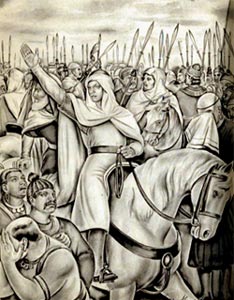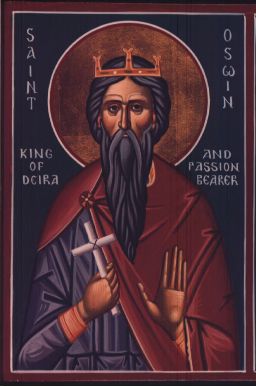The 620s decade ran from January 1, 620, to December 31, 629.
The 710s decade ran from January 1, 710, to December 31, 719.
The 610s decade ran from January 1, 610, to December 31, 619.
The 630s decade ran from January 1, 630, to December 31, 639.
The 640s decade ran from January 1, 640, to December 31, 649.
The 650s decade ran from January 1, 650, to December 31, 659.
The 660s decade ran from January 1, 660, to December 31, 669.
The 670s decade ran from January 1, 670, to December 31, 679.

Year 634 (DCXXXIV) was a common year starting on Saturday of the Julian calendar. The denomination 634 for this year has been used since the early medieval period, when the Anno Domini calendar era became the prevalent method in Europe for naming years.

Year 639 (DCXXXIX) was a common year starting on Friday of the Julian calendar. The denomination 639 for this year has been used since the early medieval period, when the Anno Domini calendar era became the prevalent method in Europe for naming years.

Year 652 (DCLII) was a leap year starting on Sunday of the Julian calendar. The denomination 652 for this year has been used since the early medieval period, when the Anno Domini calendar era became the prevalent method in Europe for naming years.

Year 711 (DCCXI) was a common year starting on Thursday of the Julian calendar. The denomination 711 for this year has been used since the early medieval period, when the Anno Domini calendar era became the prevalent method in Europe for naming years.

Year 642 (DCXLII) was a common year starting on Tuesday of the Julian calendar. The denomination 642 for this year has been used since the early medieval period, when the Anno Domini calendar era became the prevalent method in Europe for naming years.

Year 644 (DCXLIV) was a leap year starting on Thursday of the Julian calendar. The denomination 644 for this year has been used since the early medieval period, when the Anno Domini calendar era became the prevalent method in Europe for naming years.

Uthman ibn Affan was the third caliph, ruling from 644 until his assassination in 656. Uthman, a second cousin, son-in-law, and notable companion of the Islamic Prophet Muhammad, played a major role in early Islamic history. During his reign as caliph, he was known for ordering the official compilation of the standardized version of the Quran that is still being used today.

Sigebert III was the Merovingian king of Austrasia from 633 to his death around 656. He was described as the first Merovingian roi fainéant —do-nothing king—, in effect the mayor of the palace ruling the kingdom throughout his reign. However he lived a pious Christian life and was later sanctified, being remembered as Saint Sigebert of Austrasia in the Roman Catholic Church and Eastern Orthodox Church.

Muhammad ibn Abi Bakr ibn Abi Quhafa al-Taymi was an Arab Muslim commander in the service of the fourth Rashidun caliph and first Shia Imam, Ali ibn Abi Talib. Muhammad was the youngest son of the first Rashidun caliph Abu Bakr and Asma bint Umays. He had his son, Al-Qasim taught by his aunt, Aisha, and by Ibn Abbas. Which is why many Hadiths are quoted through Muhammad and his son and thus were the source of much of the information of Islam and narrations available today.

The Battle of the Camel took place outside of Basra, Iraq, in 36 AH. The battle was fought between the army of the fourth caliph Ali, on one side, and the rebel army led by Aisha, Talha and Zubayr, on the other side. Ali was the cousin and son-in-law of the Islamic prophet Muhammad, while Aisha was a widow of Muhammad, of whom Talha and Zubayr were both prominent companions. Ali emerged victorious from the battle, Talha and Zubayr were both killed, and Aisha was sent back to Hejaz afterward. The triumvirate had revolted against Ali ostensibly to avenge the assassination of the third caliph Uthman, although Aisha and Talha are both known to have actively opposed him. The three also called for the removal of Ali from office and for a Qurayshite council (shura) with Talha and Zubayr to appoint his successor.
Abu Uthman Amr ibn Uthman ibn Affan al-Umawi was a son of Caliph Uthman and played political and military roles during the caliphates of Mu'awiya I, Yazid I and Marwan I.
The Umayyad dynasty or Umayyads was an Arab clan within the Quraysh tribe who were the ruling family of the Caliphate between 661 and 750 and later of al-Andalus between 756 and 1031. In the pre-Islamic period, they were a prominent clan of the Meccan tribe of Quraysh, descended from Umayya ibn Abd Shams. Despite staunch opposition to the Islamic prophet Muhammad, the Umayyads embraced Islam before the former's death in 632. Uthman, an early companion of Muhammad from the Umayyad clan, was the third Rashidun caliph, ruling in 644–656, while other members held various governorships. One of these governors, Mu'awiya I of Syria, opposed Caliph Ali in the First Muslim Civil War (656–661) and afterward founded the Umayyad Caliphate with its capital in Damascus. This marked the beginning of the Umayyad dynasty, the first hereditary dynasty in the history of Islam, and the only one to rule over the entire Islamic world of its time.










